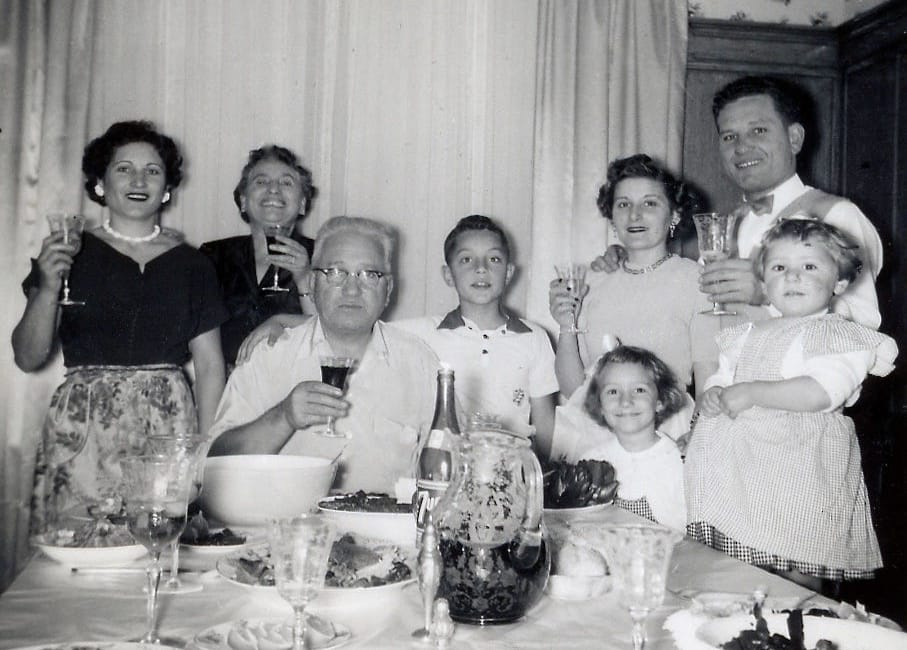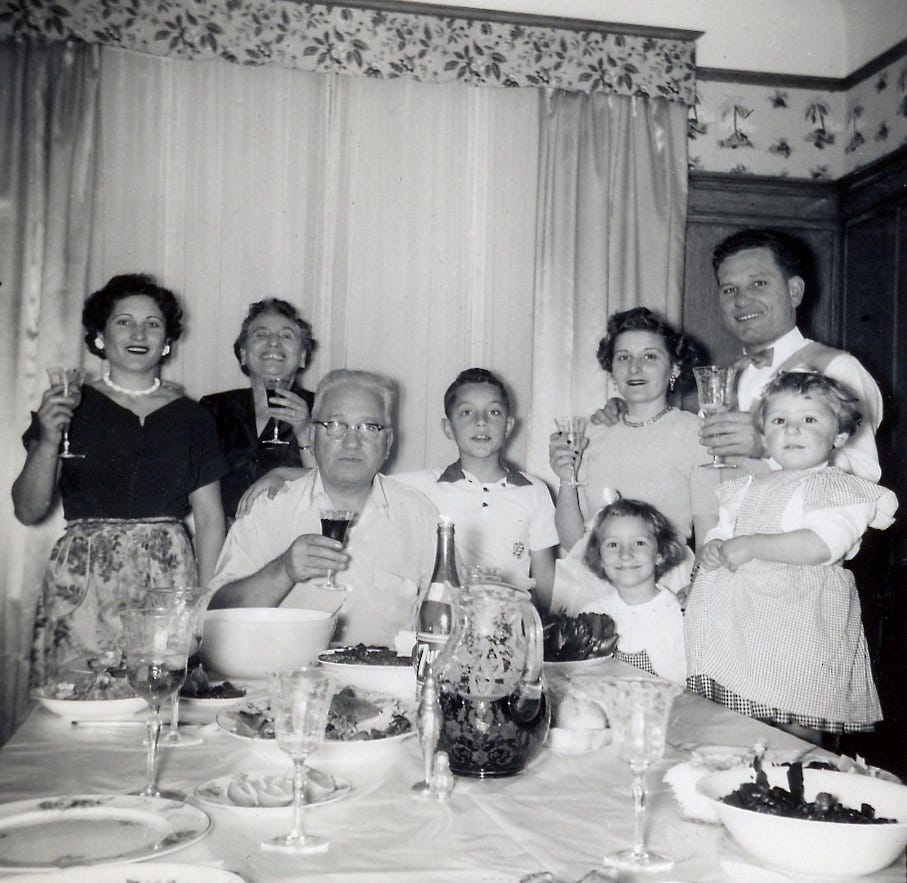
I grew up in North Beach from 1946 through the late ’50s. I was the oldest of three sons born to an immigrant family from Sicily, a few years before Carol Doda’s breasts became institutionalized at the Condor Club, titillating tourists with silicone implants and watered-down drinks, catty-corner from City Lights Booksellers & Publishers, still generating the restless rhythm of the Beats.
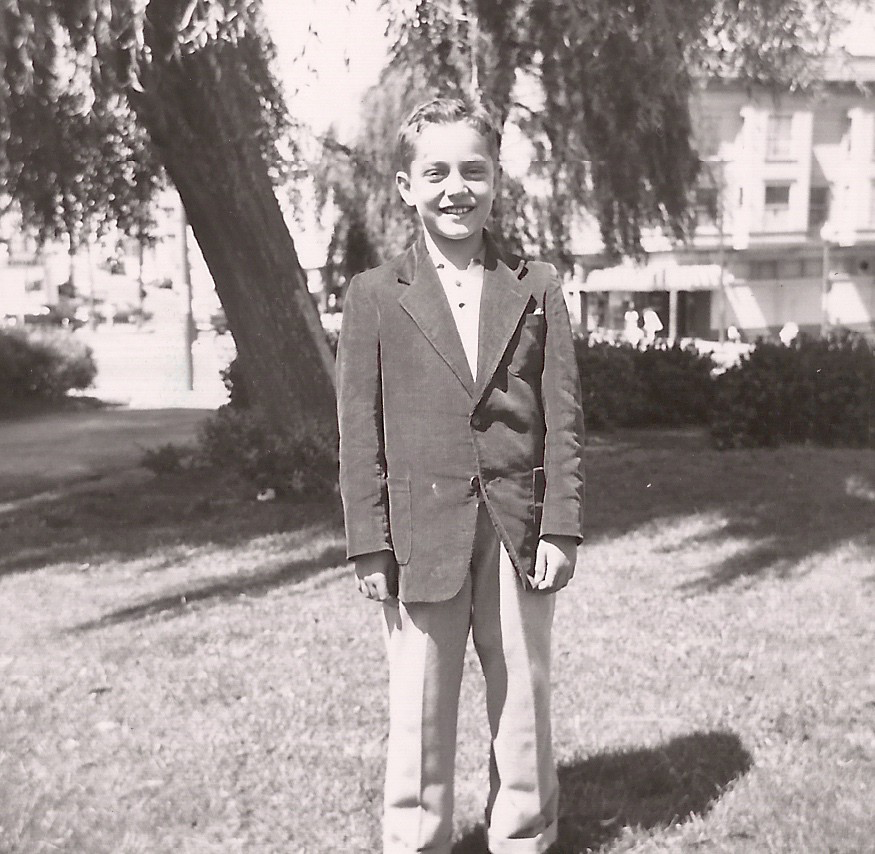
Every time I cross the Golden Gate Bridge to anywhere in San Francisco, like a salmon going back to its spawning ground, I can’t help but drive down Columbus Avenue through my beloved Italianita (Little Italy), recalling childhood memories, especially Christmas dinner with my family crowded around a table full of delizioso Italian food.
Back then, North Beach was the vibrant center of Italian San Francisco, with some 30,000 paesani (fellow countrymen who emigrated from the same province or village in the Old Country) who owned — even cherished — each other’s family. Folks would greet me and my mother on the street with Come sta nostro figlio? — “How is our son?” (always a possessive pronoun) — and a firm squeeze of the cheek that told me I belonged here.

Although the neighborhood was a mosaic of people from different regions of Italy — Genoa, Naples, Calabria, Tuscany, and Sicily — it seemed to me that everybody knew one another despite their different Italian dialects. At home we spoke Sicilian, a distinctively different language heard among the fishing and crab boats of Fishermen’s Wharf, where most of my maternal grandparents and uncles first earned a living before it became a tacky tourist destination. My father worked at a pasta factory on Drumm Street that became the Royal Pasta Company, and my mom was a seamstress who kept the household together with unconditional love, great food, and stylish handmade clothes.
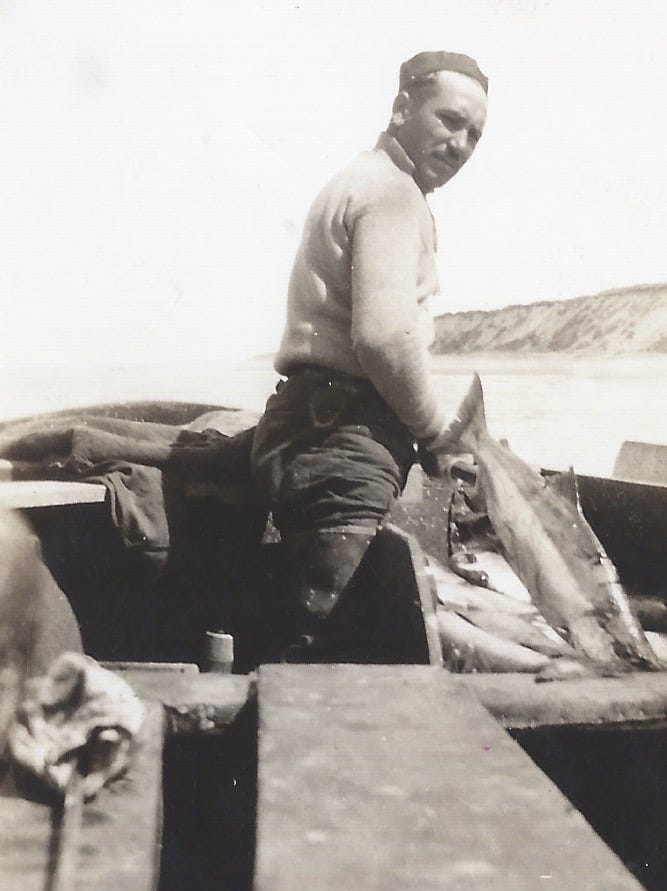
As a toddler, I lived with my mother and her parents, Sebastiano and Giuseppina Romeo, on Varennes Street, an alley off of Union Street on Telegraph Hill. After World War II, my father joined my mother and me, and we moved to Lombard Street between Stockton and Powell Streets. My two brothers were born eight and 10 years after me. My aunts, uncles, and a gazillion cousins all lived within walking distance of each other.
I went to Ss. Peter & Paul School (“Salesian School”), played basketball at the Salesian Boys’ Club (no girls till 1994), and was an altar boy at Saints Peter and Paul Church, the center for physical and spiritual well-being of the community. I played Cowboys and Indians under the cavernous bushes of Coit Tower and loved wandering through Chinatown, soaking up the sights and smells of a foreign country next door.
Washington Square Park, il Giardino (“the Garden”), was where we’d see musty old men wearing“faded felt hats,”sitting on park benches, and smoking stubby Italian Toscanello cigars that filled the air with an acrid combination of burned fermented tobacco, garlic, and a lifetime of fishing. Across the park on Stockton Street, the San Francisco Italian Athletic Club was where we celebrated life’s events — but no athletic events that I can remember.

Christmas was a magical time for celebrating family and for unrestrained feasting on great Italian — make that Sicilian—food. Rather than turkey or ham, dinner courses would center on seafood — shrimp, clams, raw or fried oysters, marinated octopus, stuffed squid, and, most importantly, Dungeness crab — all from my grandfather Sebastiano’s Romeo’s Produce & Fish Market, located on Third Street across town in San Francisco’s Bayview district. He and his two sons, Giacomo (Uncle Jack) and Giuseppe (Uncle Joe), ran the original market through the late ’50s, and my Uncle Joe and his three sons, Sebastian, Frank and John, operated Romeo’s Fish Market (a few doors down from the original site) through the late ’70s.

Preparation for Christmas dinner would begin with shopping at Buon Gusto Market, then located at the corner of Columbus Avenue and Green Street, next door to the now-vacant Buon Gusto Sausage Factory, once the largest sausage and salami producer in the West. You can still get your side dish of spicy Sicilian sausage at Little City Market, on the corner of Stockton and Vallejo Streets, where the Spinali family still makes them — authentically — with anise seed. We shopped for imported Italian salumi, cheeses, and other specialties at Molinari Delicatessen on Columbus Avenue near Vallejo Street, which is still thriving after more than 120 years.
We bought panettone (Italian Christmas bread) and sourdough bread at the now-shuttered Italian French Baking Company and focaccia bread at Liguria Bakery on Stockton and Filbert Streets—still baked by the Soracco family in the same way for more than a hundred years.
Although biscotti would be baked by my mother, Sacripantina cake and Sicilian cannoli would come from Stella’s Pastry & Cafe on Columbus Avenue, and Italian rum cake came from Victoria Pastry (Filbert and Powell Streets), established in 1911.
If a minus tide coincided with the holiday, a few family members would make a run down the coast to Moss Beach, north of Half Moon Bay, and collect spiny purple sea urchins (rizzi) for their rich and flavorful roe (“uni” for sushi gourmands) to accompany our meal. At a young age, I acquired a taste for this delicacy—one of the hallmarks of Sicilian cuisine—savored raw for its briny, sweet taste or mixed with linguine to create a luscious sauce.

Food preparation and cooking was a family affair. Men, women, and children would set the table with the finest laced linens, crystal china, and silverware. First came the appetizer plate with salami, prosciutto di Parma, mortadella di Bologna, and various cheeses, surrounded by pepperoncini and homemade dry-cured black and marinated green olives.
Vegetable dishes would include stuffed artichokes, steamed Swiss chard, or Italian string beans (either would be prepared with crushed garlic, olive oil, and lemon juice), a tossed green salad with fennel, a basket of focaccia and sourdough bread, and the crowning dish — Sicilian cracked crab.
Dinner started around 7 p.m. and continued for three to four hours with a cacophony of conversation, cursing, and gesticulations, which sounded like everyone was arguing with each other. If you were a child trying to get your parent’s attention, the chances of you being heard were slim to none. But you knew by the off-colored jokes and boisterous laughter that everyone was having a raucous time.
When dessert finally came—my favorite was Italian rum cake—after-dinner Italian liqueurs such as Strega, Galliano, or Anisette were served for the adults. Near midnight, the younger children would be put to bed; their time would soon come in a few hours. The dinner table was cleared; the ash trays were cleaned; and the more serious event of the evening would take place — the card game.
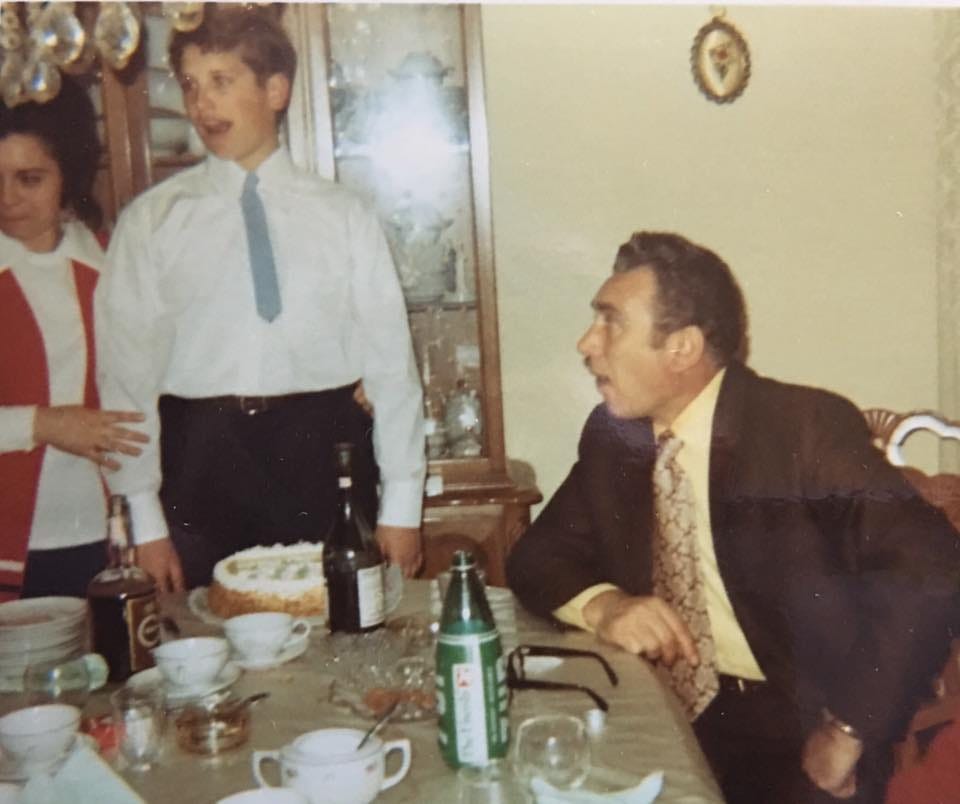
Although some of the family were inclined to attend Midnight Mass at Saints Peter and Paul Church, card playing was a more pressing part of the holiday tradition. Sometimes, a religious compromise would be reached: having the Pope’s Midnight Mass on television in the middle of a poker game.
My grandmother was notorious for cheating at cards. When she thought no one was looking, she would nonchalantly stash an ace or a king under her sweater below the table. Although the other players would sometimes make an allowance, perhaps as a gesture of respect, they would inevitably object when the winner’s pot got serious. Rather than being a cheater, we realized she was just frustrated and meant well — she would always be there to share her loot with her grandkids.
I’m now in my 70s, with yet another Christmas before me. Left with distant memories of my North Beach family, one image stands out warm and personal: the green bottle of 7UP, which stood constant amid the sumptuous repasts and reminds me of the rich heritage my family brought to my life, as well as the importance of culture and community, which make us human.
Although I can’t go back to that time and place, I realize how blessed I am to have experienced their hope, love, and support.
From my Sicilian family to you and yours, buone feste!

Sicilian cracked crab — serves 6–8 people
- 3 medium-to-large Dungeness crabs
- Several cloves of freshly pressed garlic
- ¼ cup chopped fresh mint
- 3–4 scallions chopped
- ⅛ cup olive oil
- ½ cup freshly squeezed lemon juice
- Red-pepper flakes
After thanking them, carefully place the live crabs in a large pot of salted boiling water. Bring the crabs back to a boil and cook for 12 to 15 minutes. Drain the pot and run cold water over the crabs. When cool, clean and crack the crabs (see directions) and place the crab pieces in a bowl. Add ingredients to the bowl, tossing the pieces to ensure that the crab is bathed with the marinade. Serve either chilled or soon after preparation with garlic sourdough bread and red or white wine.
NOTE: Commercial Dungeness crab is seasonal, with crabs usually available around mid-to-late November. The 2019–2020 Northern California crab season has been delayed, but it recently opened.
Charles Versaggi is a native San Franciscan of Italian-Sicilian heritage. His current project is “North Beach Light,” a collection of photo essays that reflect on his early years of living in North Beach when it was the city’s “Italianita” and the center of Beat lifestyle, topless bars, and jazz clubs, leading to flower power and the Summer of Love. Contact: charlesversaggi@me.com



